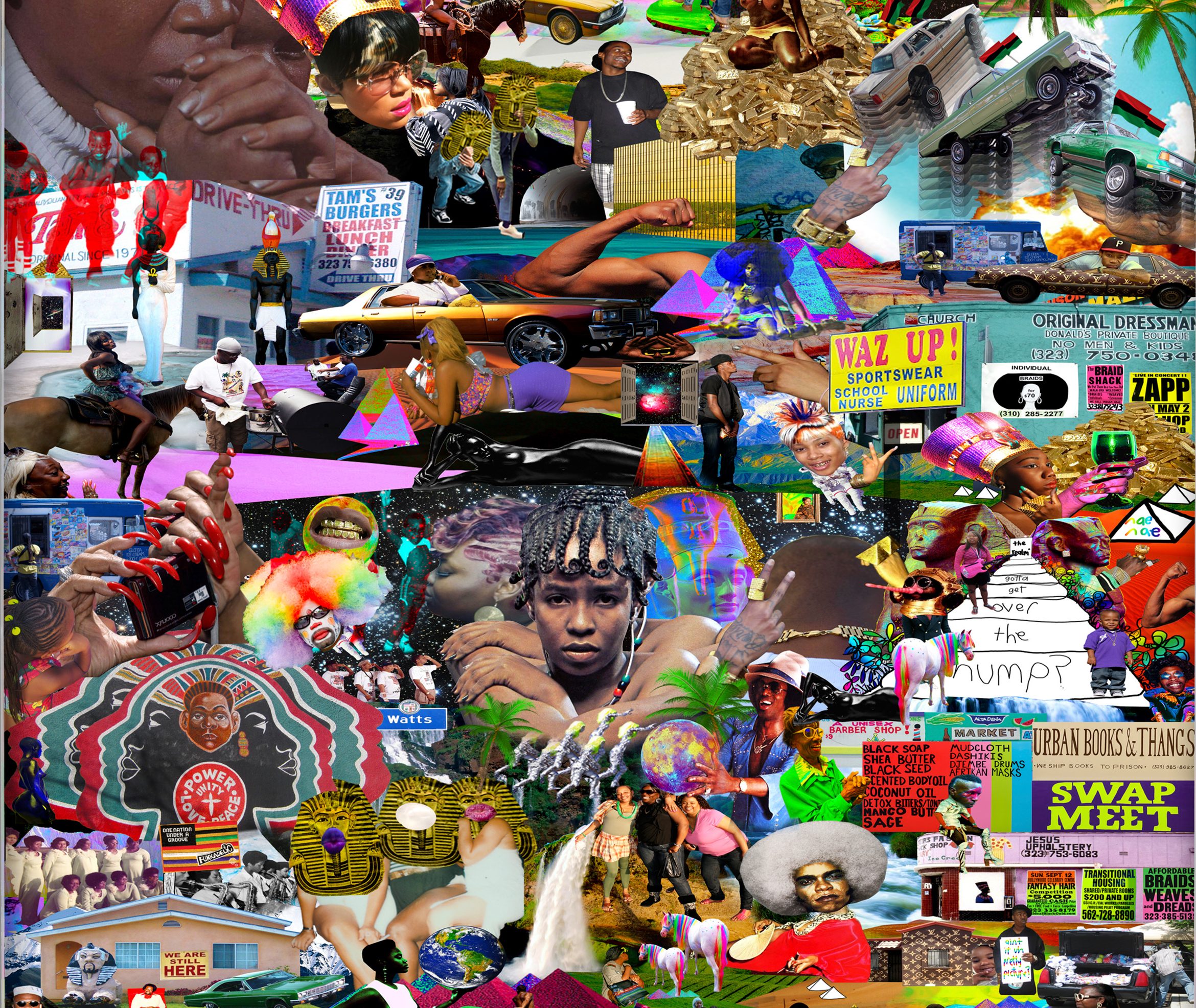Welcome to One Fine Show, where Observer highlights a recently opened exhibition at a museum outside of New York City—a place we know and love that already receives plenty of attention.
Collage is a virile form first associated with modernism that has endured a number of ‘posts,’ the first being postmodernism and post-postmodernism. It remains relevant in our current age, even though we’re pretty much post-movements in general. Collage borders on post-art, though, dragging the world into the work, sometimes to the point that you wonder about the necessity of creation at all. Experience seems to offer so many readymades. As the jingle that obsesses Leopold Bloom goes: “What is life without/ Plumtree’s Potted Meat?/ Incomplete”
So widespread is collage that a soon-to-close show at the Phillips Collection, “Multiplicity: Blackness in Contemporary American Collage,” showcases the technique through a specific lens but still spans three floors in two buildings. It brings together more than fifty works to explore how the African American story is constructed from a great deal of diverse material. The show features pieces by forty-nine artists including Mark Bradford, Lauren Halsey, Rashid Johnson, Kerry James Marshall, Wangechi Mutu, Tschabalala Self, Lorna Simpson, Mickalene Thomas and Kara Walker.
SEE ALSO: Asia Week New York Is Back for Autumn With a Smaller Program of Exhibitions and Auctions
Halsey has to be one of the hottest names in the art world at the moment, fresh from last year’s commission on the rooftop of the Metropolitan Museum of Art and her columns at this year’s Venice Biennale, which borrowed from both the Hathoric discipline and Shrek. Her collages here ace the assignment, resembling at first glance the kind of magazine collages you might have made in elementary school, if you’d had a supernatural sense of color and theme. Loda Land (2020) probes the kind of visuals one encounters in South Central to weave a narrative about space, aliens and humanity, showing no more of her hand than the scissors she holds. A similar work, betta daze (loda land) (2021) introduces Hotep culture and pyramids to this conversation.
Born in 1943, Howardena Pindell might be slightly less buzzy but employs a similarly compelling interplay of colors between seemingly unrelated bits of subject matter, hers connected only slightly more by having been drawn. Shaped like brains, her pieces feel naturally occurring, though every inch of them has been made by hand. Lorna Simpson’s contributions merge the pop cultural and natural, with pin-up gals from the 1960s who are becoming star charts on a cheeky background that is probably legally distinct from Yves Klein’s blue.
Great work has been done with basketball art by Jeff Koons and Paul Pfeiffer, but in this show, Tay Butler manages to achieve what they do in Hyperinvisibility (2022) with far less technical support. In it, he cuts up a familiar image of Michael Jordan about to slam dunk and somehow turns all the little pieces so that the man has vanished. Perhaps this is why artists of all races and persuasions keep returning to collage. It is so simple and so effective no matter the era.
“Multiplicity: Blackness in Contemporary American Collage” is on view at the Phillips Collection through September 22.

